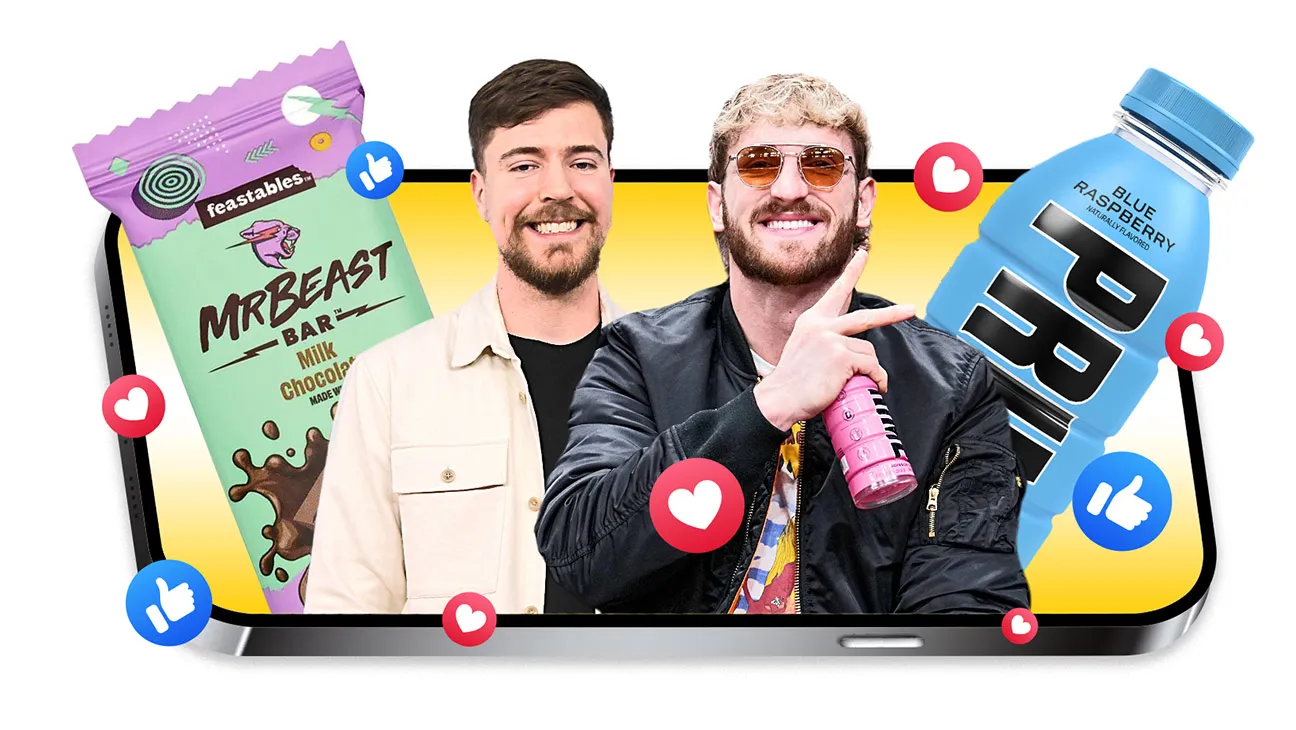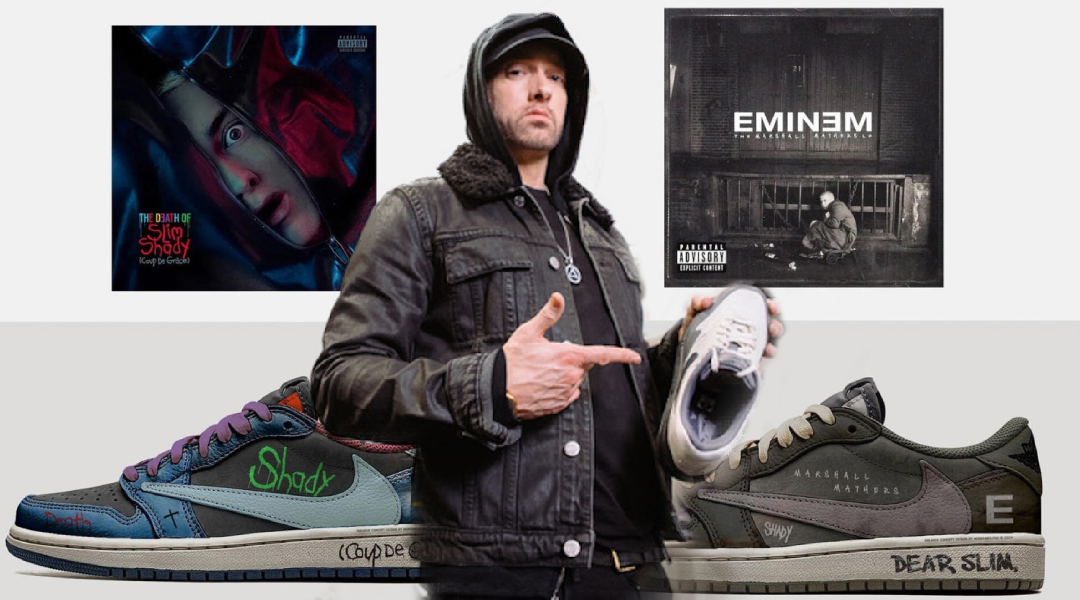Venture firms are luring digital megastars with $100 million deals to expand their brands outside YouTube, TikTok and Instagram.
Two years ago, Jimmy Donaldson, better known as MrBeast, ventured to Bentonville, Arkansas, with his management team to talk creators — and chocolate. Donaldson, a giant on YouTube (252 million-plus subscribers), was aiming to leverage his audience to build a real-world business: a candy line called Feastables. And Walmart, based in Bentonville, signed on as a launch partner.

Feastables now brings in nine figures annually in revenue, Donaldson told a conference last year, making it a textbook example of how a creator can monetize fandom. “I know for a fact that Walmart and a lot of these retailers are now going, ‘OK, what Jimmy did in chocolate, what Logan [Paul] did in hydration [with beverage brand Prime], are creators building in other categories? And should we be more aggressive?” says Reed Duchscher, CEO of creator management firm Night Media, which had repped MrBeast in all areas until recently but now just reps Donaldson for his Feastables business.
It’s a phenomenon not lost on financial firms, which are increasingly eager to bet on creators and carve out their own piece of the pie, or chocolate bar. Feastables, for example, raised $5 million in 2022 from venture firms 776, Shrug Capital and Sugar Capital. “For us, we had already tested out [Mr. Beast’s] fan loyalty quite a bit,” Duchscher says. “We had known, roughly, how many T-shirts, hoodies, hats were sold within the first 24 hours, week, month, and it could really kind of back into like, how deeply do people care about him? Will they purchase some type of item when he sells it?”

The creator economy is no longer some nascent curiosity; it has become a legitimately big business. Goldman Sachs analyst Eric Sheridan estimates it’s a $250 billion market, one that will grow to nearly $500 billion by 2027. And while platform and direct advertising is still the bulk of that, many popular creators are branching out and thinking about building real businesses off YouTube, TikTok and Instagram, hoping to leverage the relationship they have with subscribers in the process.
Private equity firms and other financiers have taken notice. Consider Highmount Capital’s recent $100 million-plus investment in YouTube trick shot stars Dude Perfect (60.1 million subscribers on their main channel), which Dude Perfect plans to use to create live experiences, destinations and consumer products. “We really want to expand what we can create for families to actually use in their own homes, and we feel like the possibilities are endless,” Dude Perfect co-founder Coby Cotton says.
“We thought a significant investment made sense just because when you look at all the things that they have in front of them — working with sports teams, and retailers and opportunities for events — we want to make sure there’s enough capital there to do it really well,” added Jason Illian, Highmount’s general partner. “When you talk to all these teenagers and kids and people that watch the dudes, you know, they’re all being influenced.”
That influence is real, with Illian noting how a Dude Perfect-branded beverage ($9.99 in some locations) drew lines to the Smoothie King chain this year. Or consider Logan Paul’s Prime beverage brands (Prime Hydration, which competes with the likes of Gatorade, and Prime Energy, which competes with the likes of Red Bull), which Bloomberg says will top $1.2 billion in sales this year. The connection between creators and their audience can drive real revenue
But that connection with fans comes with a price, and it is a big reason why creators are exploring opportunities outside the major video platforms in the first place. YouTube and TikTok have enabled creators to garner millions of fans and to spread and monetize their content around the world. But one tweak of their recommendation algorithms can alter fortunes, quite literally.
“I’ve always been wary of the fact that a career on YouTube means you’re beholden to the YouTube algorithm for everything,” says Doug DeMuro, whose car-focused YouTube channel has 4.8 million subscribers. “Even in the early days of making a good living on YouTube, I was thinking about branching out and trying to create a business that I could bring my audience to, separate from the algorithm.”
The result of that concern was an auction website for enthusiasts of modern autos called Cars & Bids, where DeMuro could leverage the loyal audience he built on YouTube and other platforms to build a business while creating content for Cars & Bids’ own channels in the process.
In 2023, Peter Chernin’s The Chernin Group invested $37 million in the business, taking a majority stake in Cars & Bids as well as DeMuro’s YouTube channels.
“Initially we were trying to avoid basically any investors or exit opportunities as we felt we were too small, but we eventually started to scale up and took a call with TCG. The primary thing that made TCG especially appealing was their previous work with other creator-led and creator-founded businesses,” DeMuro says. “Specifically, I think a lot of investors would try to enter a business like ours and make major changes or not really understand what about the creator relationship with audience motivates people to patronize a business — but TCG understood implicitly, and it felt like an investor that would create a great partnership, not just a series of top-down directives.”
That relationship is the critical piece of the puzzle. “Commerce businesses must be able to stand on their own to sustain long-term value,” says Steve Cousineau, a principal at TCG. “When a creator has a genuine connection to a passionate, engaged audience who wants to spend, you have a highly effective business accelerant.”
But despite the rise of creator-led business and the rapid growth of the creator economy writ large, there remains a limit to what types of businesses can thrive. Or, as one financial source says, “I think there’s a lot more capital in the market than there is opportunities at the moment.”
The pool of creators with an audience large enough and loyal enough to support a business may be smaller than people think, but the exuberance in the space from private equity and investors looking for an edge needs to be fed.
“A lot of the creators that I speak with, a lot of them are thinking about building businesses, they’re getting into that pipeline of okay, what do I need to do? Do I need to raise capital? Who do I need to hire? but it’s still very early,” Duchscher says. “I talk to a lot of private equity investors and everyone is looking at this space, I think the hard part now is there’s just a little bit of like a lack of opportunity, or lack of investable businesses.”
That is the conundrum at the heart of the creator economy. Creator-driven content is booming on social and video platforms, and the desire to branch out into other areas is strong from both investors seeking to deploy their capital into The Next Big Thing, and creators looking to free themselves from the algorithms.
But that desire isn’t enough, there needs to be a viable business plan too, be it chocolate or consumer products, a car auction marketplace or a live experience.
“I think like the most dangerous thing that I’ve seen is when a creator thinks that they need to raise capital, just so that they have the money when maybe they will come up with an idea of where to spend it,” Duchscher says. “You need to have an idea of where you’re going to invest the money, and what you want to focus on, before you even start to talk to private equity.”
A version of this story first appeared in the May 8 issue of The Hollywood Reporter magazine.










